
Roots
A quiet observation settles upon us, one often overlooked in the hurried pace of daily life ❉ the very strands upon our heads hold echoes of distant shores and ancient wisdom. To truly tend to hair, particularly textured hair, one must first feel the weight of its story, recognizing it not merely as a biological structure but as a living record of human experience. This section invites a gentle contemplation of hair’s fundamental nature, its intricate physical make-up, and the language we use to describe it, all while holding close the understanding that this physical presence carries profound cultural meaning.

Hair Anatomy and Physiology Specific to Textured Hair
The individual hair strand, a deceptively simple structure, reveals remarkable complexity under close inspection. Each strand emerges from a follicle, a tiny organ nestled within the scalp. For textured hair, this follicle is typically elliptical or ribbon-like in shape, rather than perfectly round.
This unique follicular geometry causes the hair shaft to grow in a curvilinear, often spiraling path. The degree of this curvature gives rise to the diverse range of coils, curls, and waves seen in textured hair.
The hair shaft itself comprises three main layers ❉ the cuticle, cortex, and medulla. The outermost layer, the Cuticle, consists of overlapping, scale-like cells. In highly coiled hair, these cuticle scales tend to be raised, contributing to a drier feel and potentially making the hair more prone to tangling. The Cortex, the middle layer, holds the majority of the hair’s mass, providing strength and elasticity, and containing melanin, which gives hair its color.
The innermost layer, the Medulla, may be present or absent, depending on hair type and thickness. The specific cross-sectional shape and the distribution of disulfide bonds within the cortex play a significant role in determining curl pattern and overall resilience.
The unique follicular shape of textured hair dictates its characteristic spirals and coils, a biological blueprint carrying cultural weight.
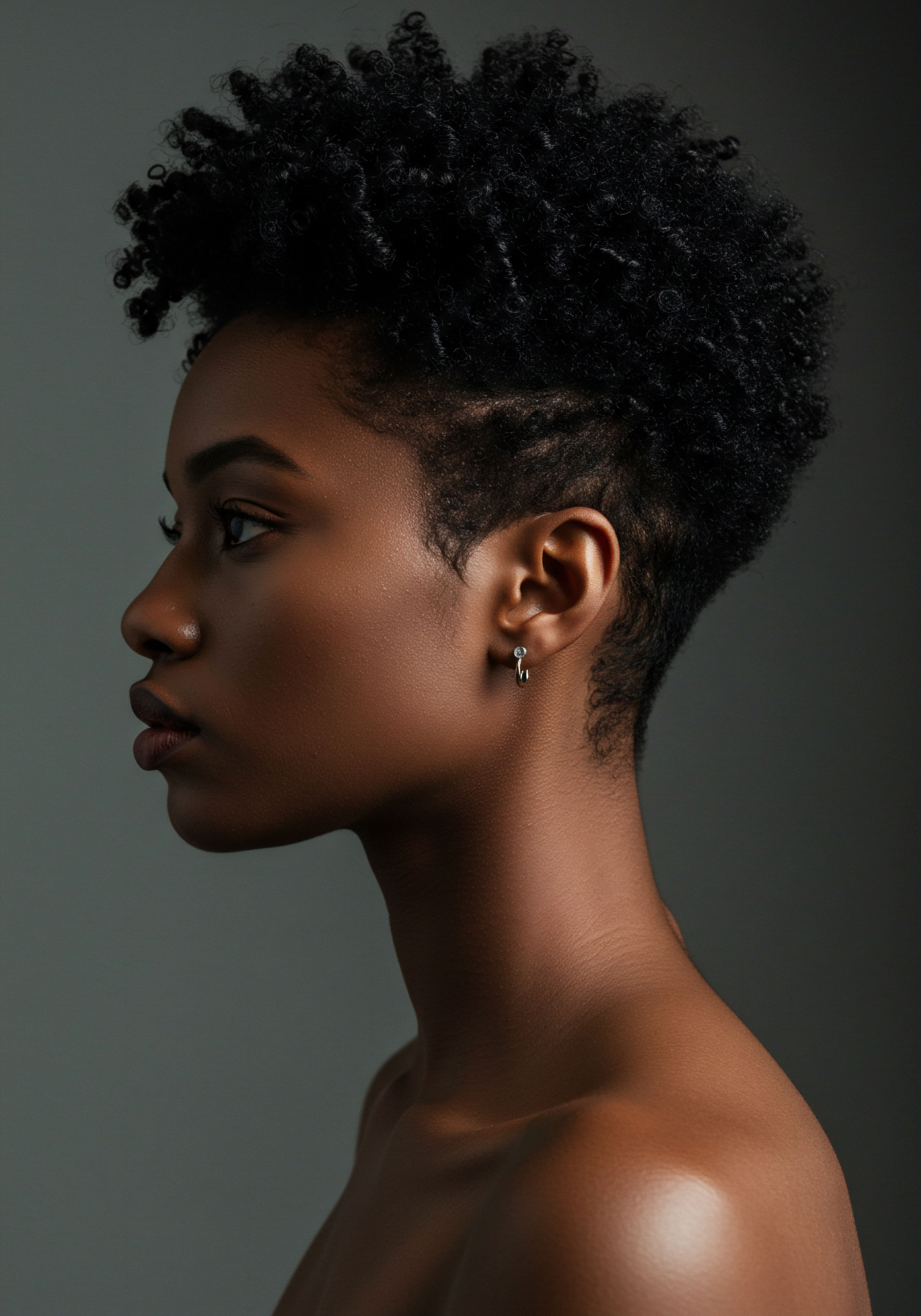
Textured Hair Classification Systems
Attempts to categorize hair patterns have long sought to bring order to the vast diversity of textured hair. While no single system perfectly captures every nuance, these classifications serve as helpful guides for care and communication. The most widely recognized system uses numbers and letters to denote curl type.
- Type 3 Hair ❉ Characterized by distinct S-shaped curls, ranging from loose waves (3A) to tighter, springy curls (3B) and corkscrews (3C).
- Type 4 Hair ❉ Features very tight, often Z-patterned coils or kinks, with less defined S-shapes. This type includes densely packed coils (4A), tighter zig-zag patterns (4B), and highly compacted, sometimes invisible, curl patterns (4C).
Beyond these numerical designations, understanding hair’s porosity, density, and strand width provides a more complete picture for tailored care. Porosity refers to the hair’s ability to absorb and hold moisture, with highly porous hair having more open cuticles. Density indicates the number of individual hair strands on the scalp, while Strand Width describes the thickness of a single hair fiber. Each of these attributes impacts how hair responds to products and styling methods.

The Essential Lexicon of Textured Hair
A precise language helps us speak to the specific needs of textured hair. Words like “coily,” “kinky,” “curly,” and “wavy” describe the spectrum of natural patterns. Terms such as “shrinkage” refer to the apparent reduction in hair length when wet or styled, a common trait of highly coiled hair. “Protective styles” are those that keep hair strands tucked away, minimizing manipulation and environmental exposure.
“Co-washing” points to the practice of cleansing hair with conditioner rather than shampoo, preserving moisture. A shared vocabulary allows for clearer communication among individuals, stylists, and product creators, moving beyond general descriptions to precise care conversations.

Hair Growth Cycles and Influencing Factors
Hair growth follows a cyclical pattern, repeating throughout a person’s life. This cycle has three main phases:
- Anagen Phase ❉ The active growth period, lasting from two to seven years.
- Catagen Phase ❉ A transitional stage, lasting about two to three weeks, where hair growth stops.
- Telogen Phase ❉ The resting period, lasting around two to four months, after which the hair sheds.
Several factors can influence these cycles, including genetics, diet, stress levels, hormonal changes, and certain medical conditions. For textured hair, mechanical stress from styling or harsh chemical treatments can also disrupt these cycles, potentially leading to breakage or thinning. Understanding these biological rhythms offers a guide for patience and consistency in hair care.
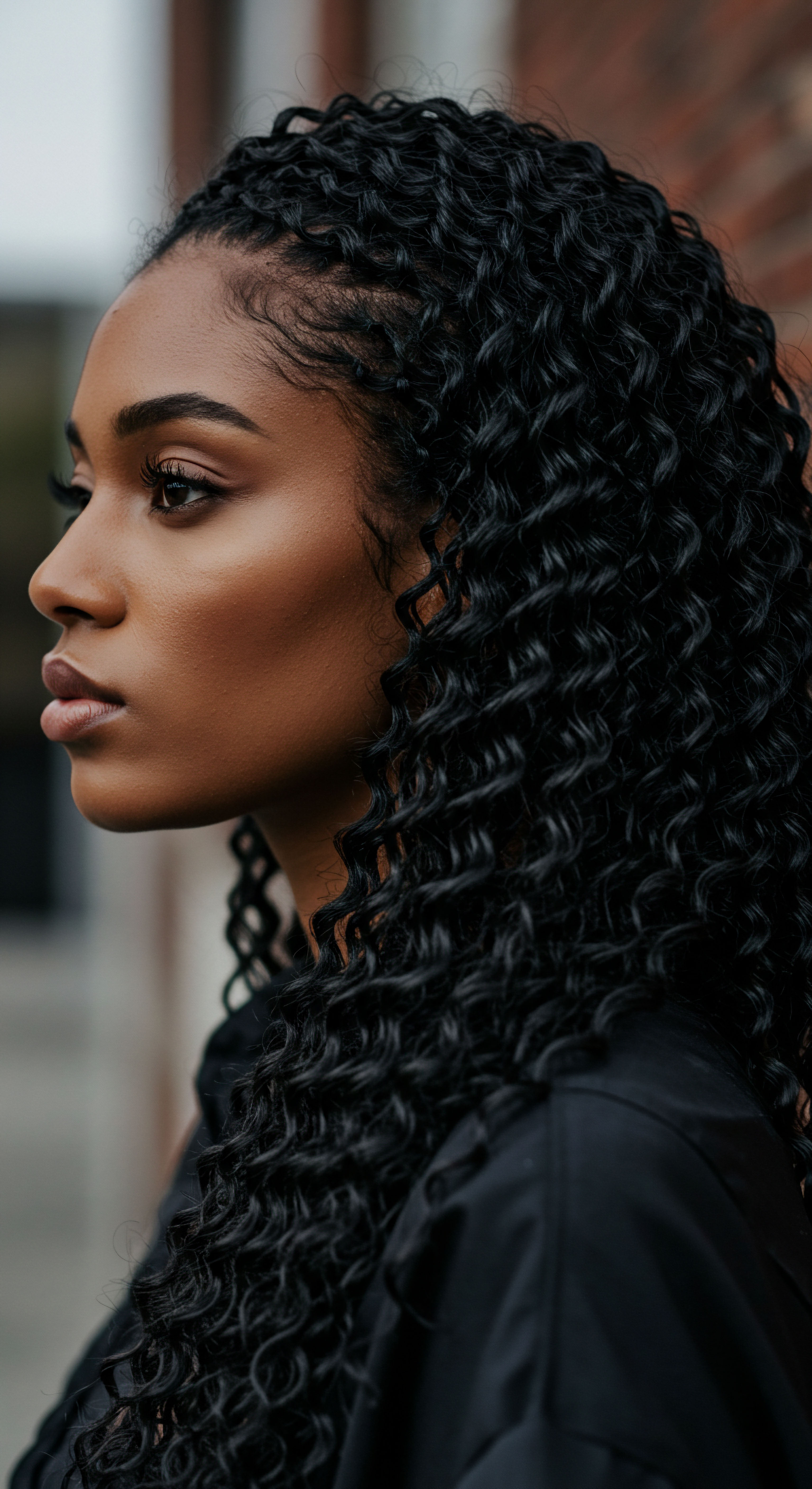
Ritual
As the morning light graces our space, a thought often arises ❉ how do we approach our hair today? This daily question, seemingly simple, carries generations of wisdom within its unspoken answer. It is a query that beckons us to consider not just what we do, but why we do it, drawing upon practices passed down through time. This section invites a gentle consideration of hair care as a series of deliberate actions, each imbued with purpose and history, offering a guide for daily and periodic routines.
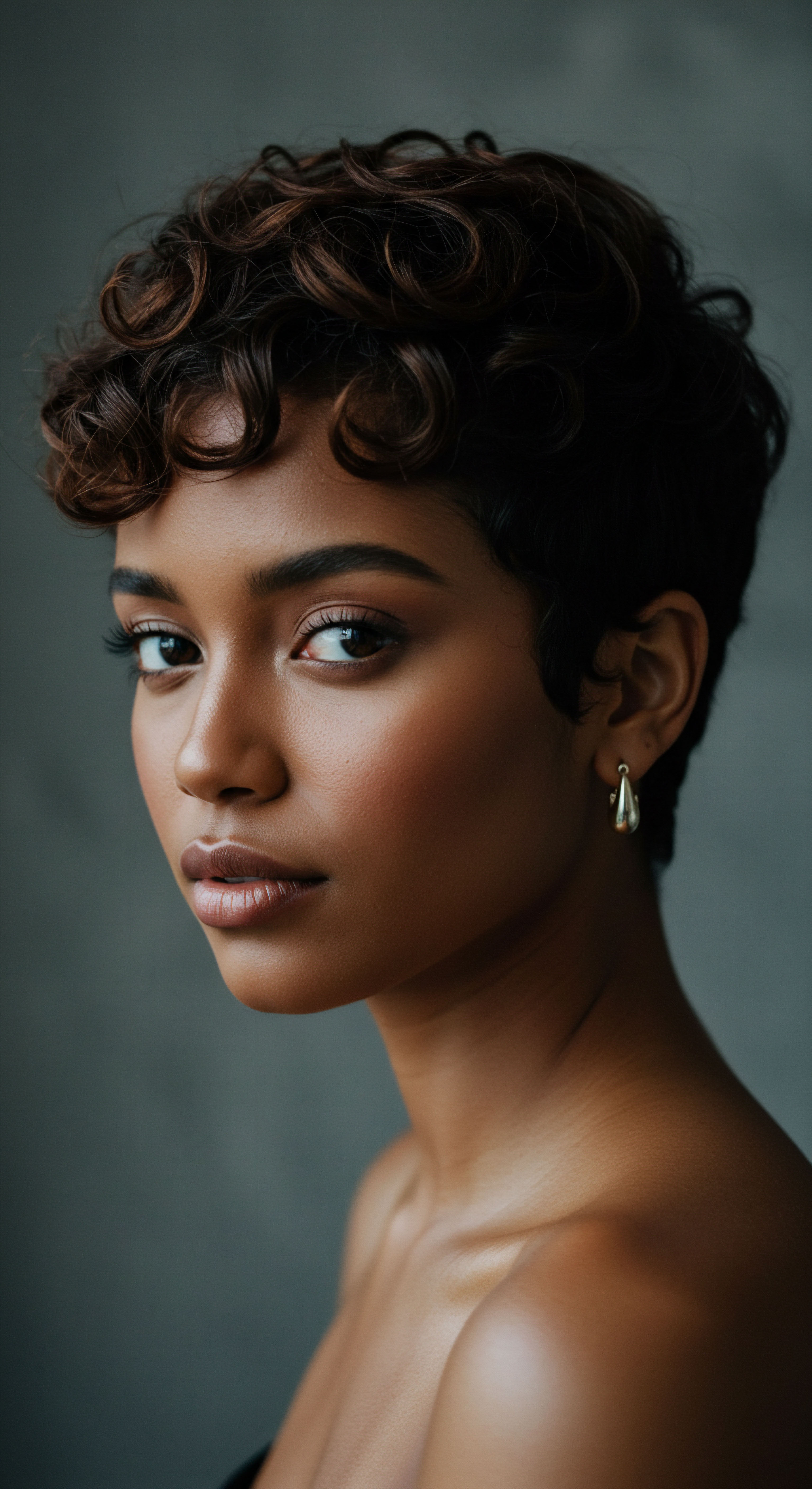
Protective Styling Encyclopedia
Protective styles shield hair from environmental aggressors and reduce daily manipulation, contributing to length retention and overall hair health. These styles, many with roots in ancestral practices, serve as a testament to enduring wisdom.
Some common protective styles include:
- Braids ❉ These involve dividing hair into sections and interlinking three or more strands. Varieties range from cornrows, which sit flat against the scalp, to box braids, which are individual plaits.
- Twists ❉ Similar to braids, twists involve coiling two sections of hair around each other. Senegalese twists and flat twists are popular variations.
- Locs ❉ A long-term style where hair is intentionally matted and coiled into rope-like strands. This style represents a significant commitment and often holds deep cultural meaning.
- Buns and Updos ❉ Simple yet effective, these styles keep hair off the shoulders and neck, minimizing friction and exposure.
Each protective style offers unique benefits, from promoting growth by reducing breakage to providing versatility in appearance. The longevity of a protective style varies, but proper preparation and maintenance are essential to prevent scalp irritation or tension.
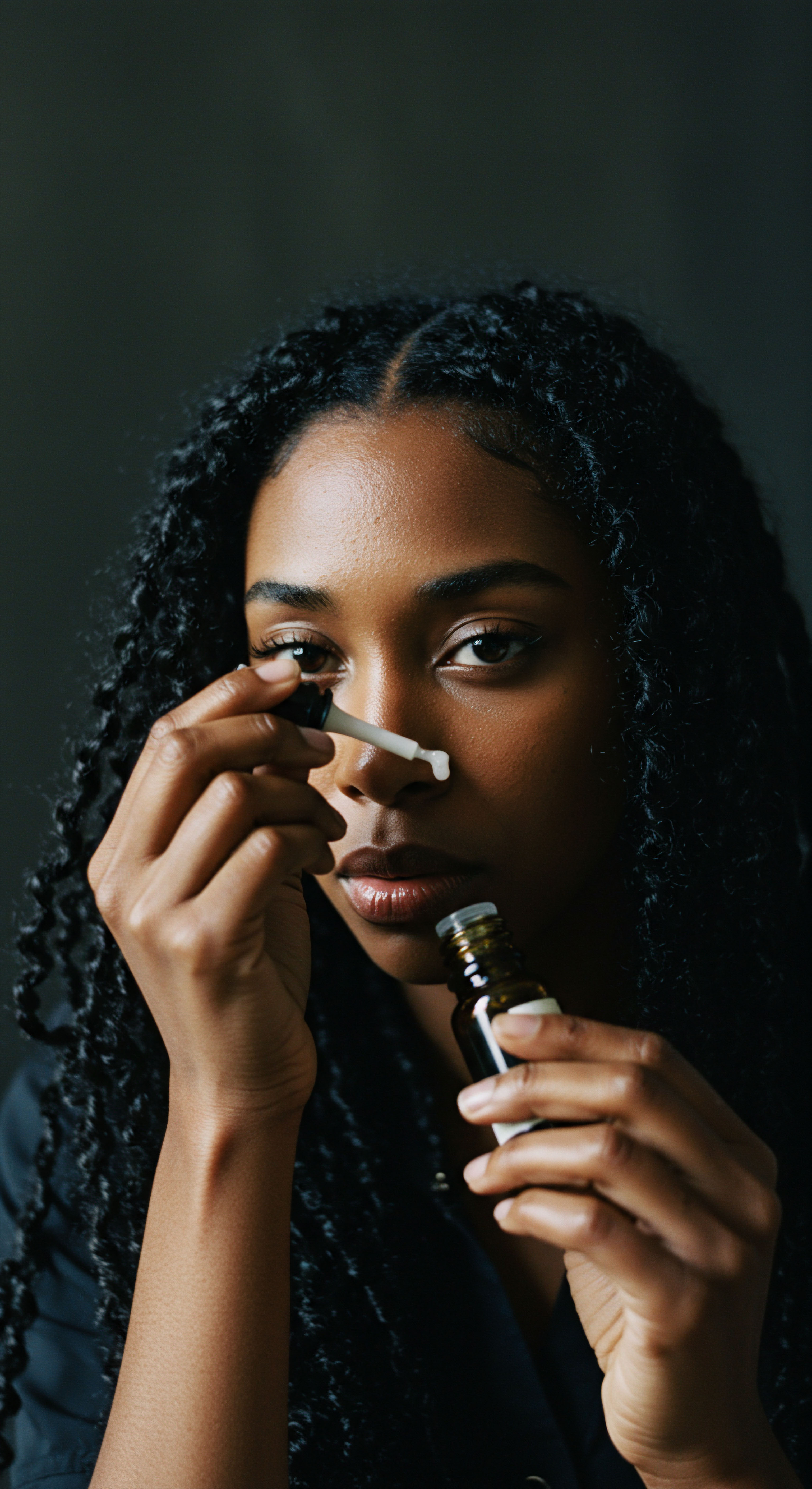
Natural Styling and Definition Techniques
Celebrating natural texture involves techniques that enhance curl pattern without altering the hair’s inherent structure. These methods often center on moisture and gentle manipulation.
Techniques for defining natural hair include:
- Wash and Go ❉ A method where hair is cleansed, conditioned, and then styled while wet to allow natural curls to form, often with the help of defining products.
- Twist-Outs and Braid-Outs ❉ These styles involve setting wet or damp hair in twists or braids, allowing them to dry, and then carefully unraveling them to reveal a defined, stretched curl pattern.
- Finger Coiling ❉ This precise technique involves wrapping small sections of hair around a finger to encourage curl formation, yielding highly defined results.
The success of these techniques relies heavily on product selection, including leave-in conditioners, curl creams, and gels, which provide hold and moisture without stiffness. The aim is to allow hair to dry in its most harmonious state.
Daily and periodic hair practices, shaped by generational wisdom, offer a gentle pathway to care and self-expression.
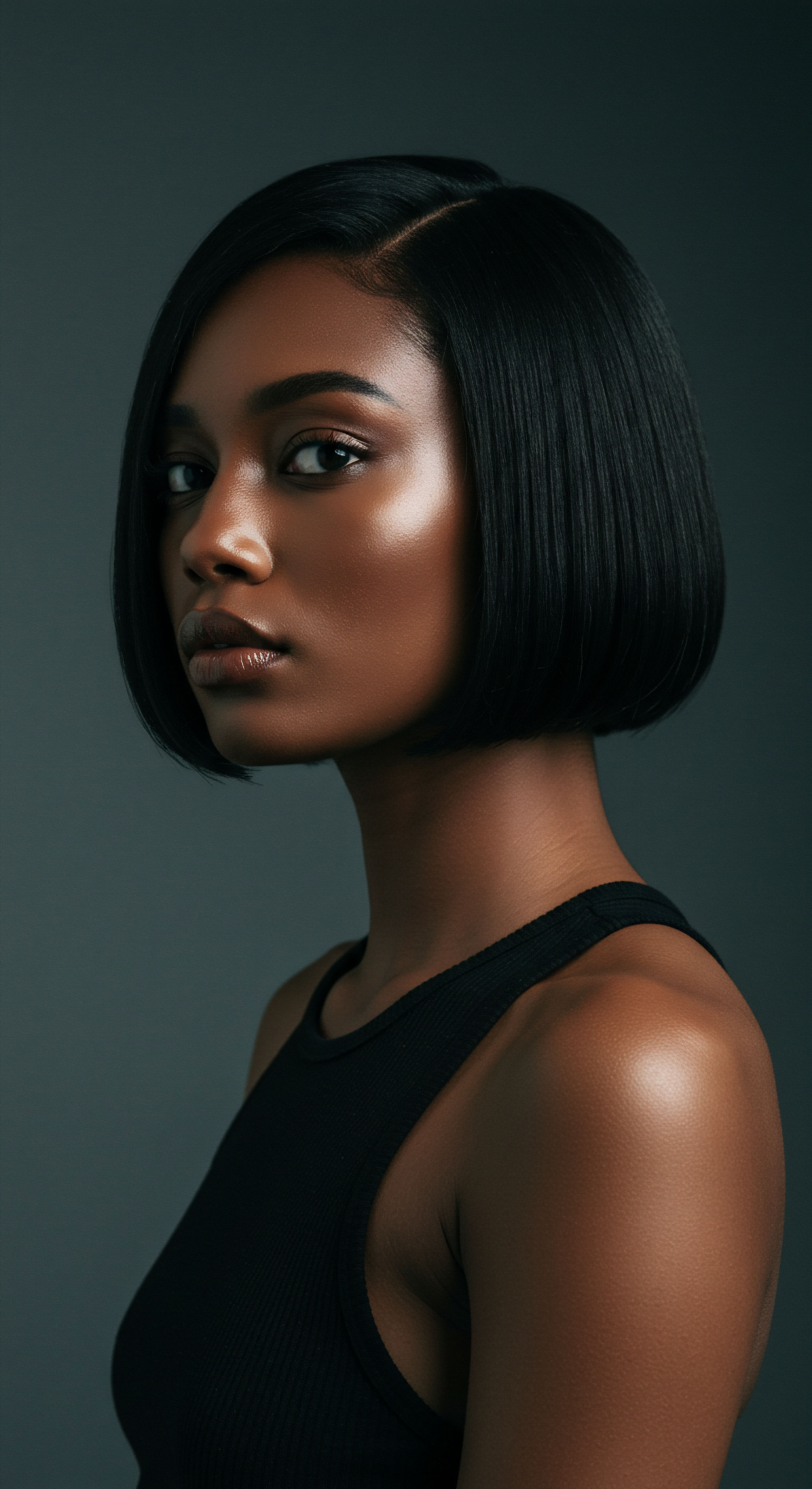
Wigs and Hair Extensions Mastery
Wigs and hair extensions offer versatility and protective benefits, allowing for varied appearances without direct manipulation of one’s own hair. Their use has a long history, often serving as cultural markers, symbols of status, or practical solutions.
Considerations for wigs and extensions:
- Wig Types ❉ These range from full wigs to lace frontals and closures, offering different levels of coverage and natural appearance.
- Extension Methods ❉ Common methods include sew-ins, clip-ins, tape-ins, and micro-links, each with specific application and removal processes.
- Maintenance ❉ Proper care for wigs and extensions involves regular cleansing, conditioning, and storage to preserve their quality and longevity.
When worn as protective styles, wigs and extensions shield natural hair from heat, styling tools, and environmental exposure. It remains important to maintain the underlying natural hair with appropriate cleansing and moisturizing routines.

Heat Styling and Thermal Reconditioning Safety
While natural textures are celebrated, heat styling offers options for temporary straightness or defined curls. This requires a careful, safety-first approach to preserve hair integrity.
Thermal reconditioning, such as chemical relaxers or Brazilian blowouts, permanently alters the hair’s disulfide bonds. These processes require professional application and careful aftercare to avoid damage.
Key considerations for heat styling:
- Heat Protectants ❉ Always apply a heat protectant product before using hot tools to shield strands from high temperatures.
- Temperature Control ❉ Use the lowest effective heat setting. High temperatures can cause irreversible damage to the hair’s protein structure.
- Frequency ❉ Limit the frequency of heat styling to reduce cumulative stress on the hair.
Understanding the science behind heat’s effect on hair allows for informed choices, balancing desired aesthetics with hair health.

The Complete Textured Hair Toolkit
Having the right tools is as important as having the right techniques. A curated collection of implements supports gentle, effective hair care.
Essential tools for textured hair:
- Wide-Tooth Combs ❉ Ideal for detangling wet hair, minimizing breakage.
- Denman Brushes or Flexi-Brushes ❉ Useful for defining curls and distributing products evenly.
- Microfiber Towels or T-Shirts ❉ Gentler than traditional terrycloth towels for drying hair, reducing frizz and friction.
- Satin or Silk Scarves and Bonnets ❉ Crucial for protecting hair during sleep.
- Spray Bottles ❉ Helpful for dampening hair during styling or refreshing curls.
The proper selection and use of these tools can significantly enhance the effectiveness of hair care routines, allowing for respectful interaction with delicate strands.
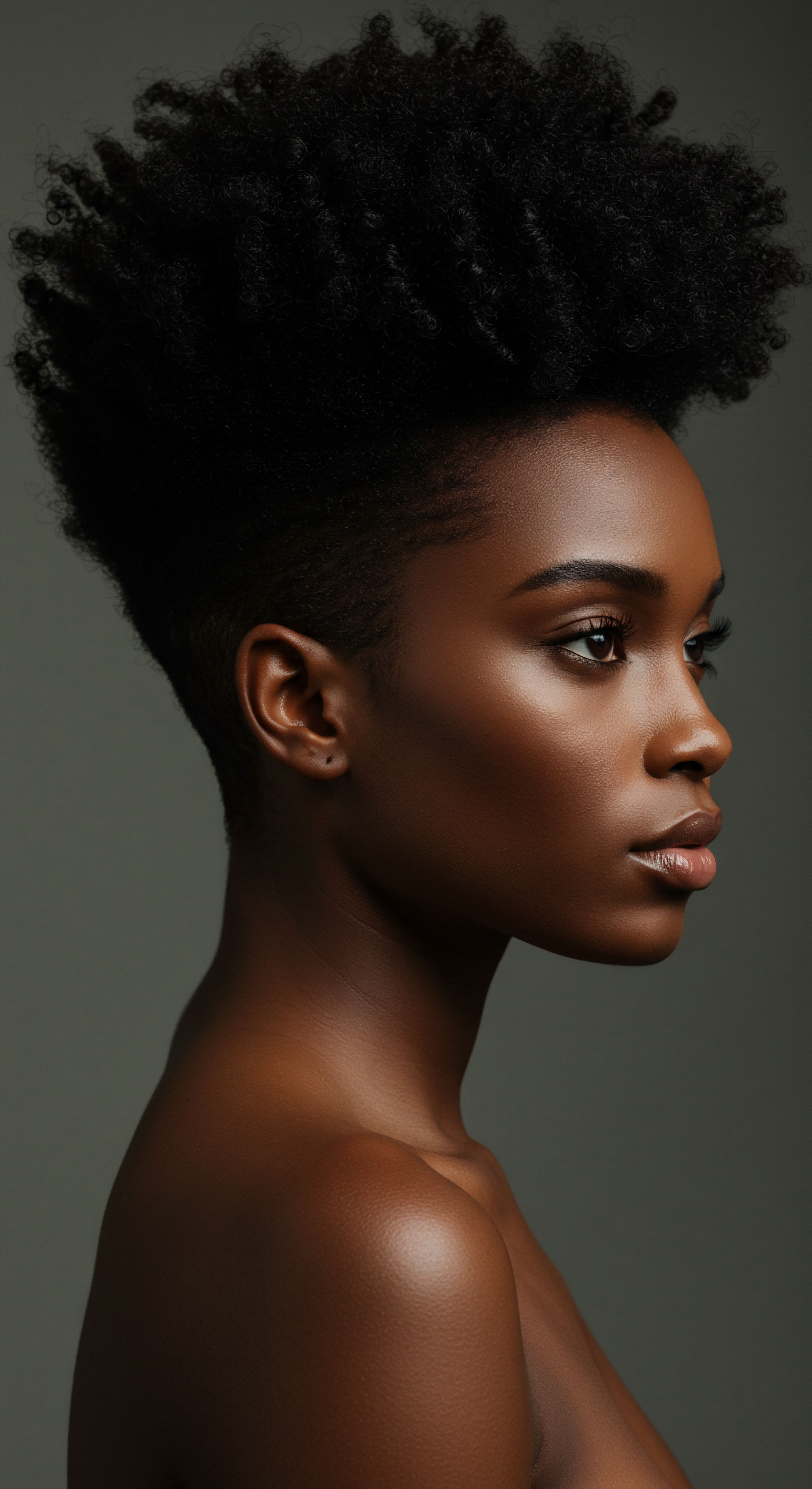
Relay
As we consider the daily rhythms of hair care, a deeper contemplation arises ❉ how do these individual acts connect to something larger, a continuous stream of knowledge passed across generations? This section extends our thoughts beyond immediate practice, drawing upon the enduring wisdom of ancestors to refine modern care strategies. It is an invitation to view hair health not as a solitary pursuit, but as a conversation between past and present, science and tradition, personal wellness and communal well-being.
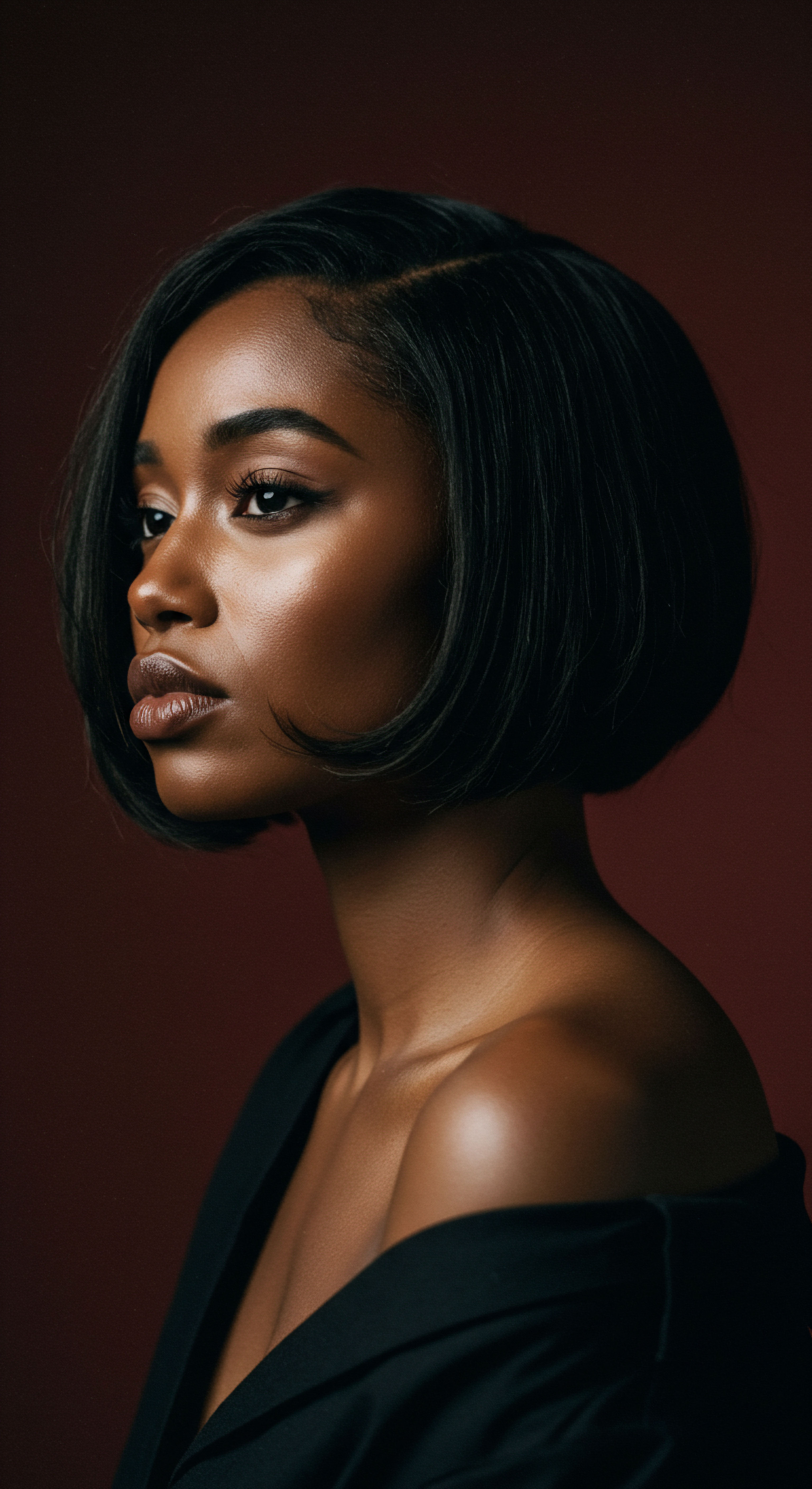
Building Personalized Textured Hair Regimens
A truly effective hair care regimen is not a one-size-fits-all prescription; rather, it is a bespoke collection of practices tailored to individual needs, drawing inspiration from both contemporary science and historical methods. For textured hair, this means accounting for its unique structural properties and its specific requirements for moisture and gentle handling.
Consider the climate, lifestyle, and personal hair goals. A regimen for someone living in a humid environment with high-porosity hair will differ greatly from one for someone in a dry climate with low-porosity strands. A personalized regimen might involve:
- Pre-Poo Treatments ❉ Applying oils or conditioners before shampooing to protect hair from stripping.
- Gentle Cleansing ❉ Using sulfate-free shampoos or co-washing to preserve natural oils.
- Deep Conditioning ❉ Regular treatments to infuse hair with moisture and nutrients.
- Leave-In Conditioners and Sealants ❉ Layering products to lock in hydration.
The art of regimen creation rests upon observation and responsiveness. Noticing how hair reacts to different products and environmental conditions guides adjustments, much like how previous generations adapted their practices to local resources and conditions.
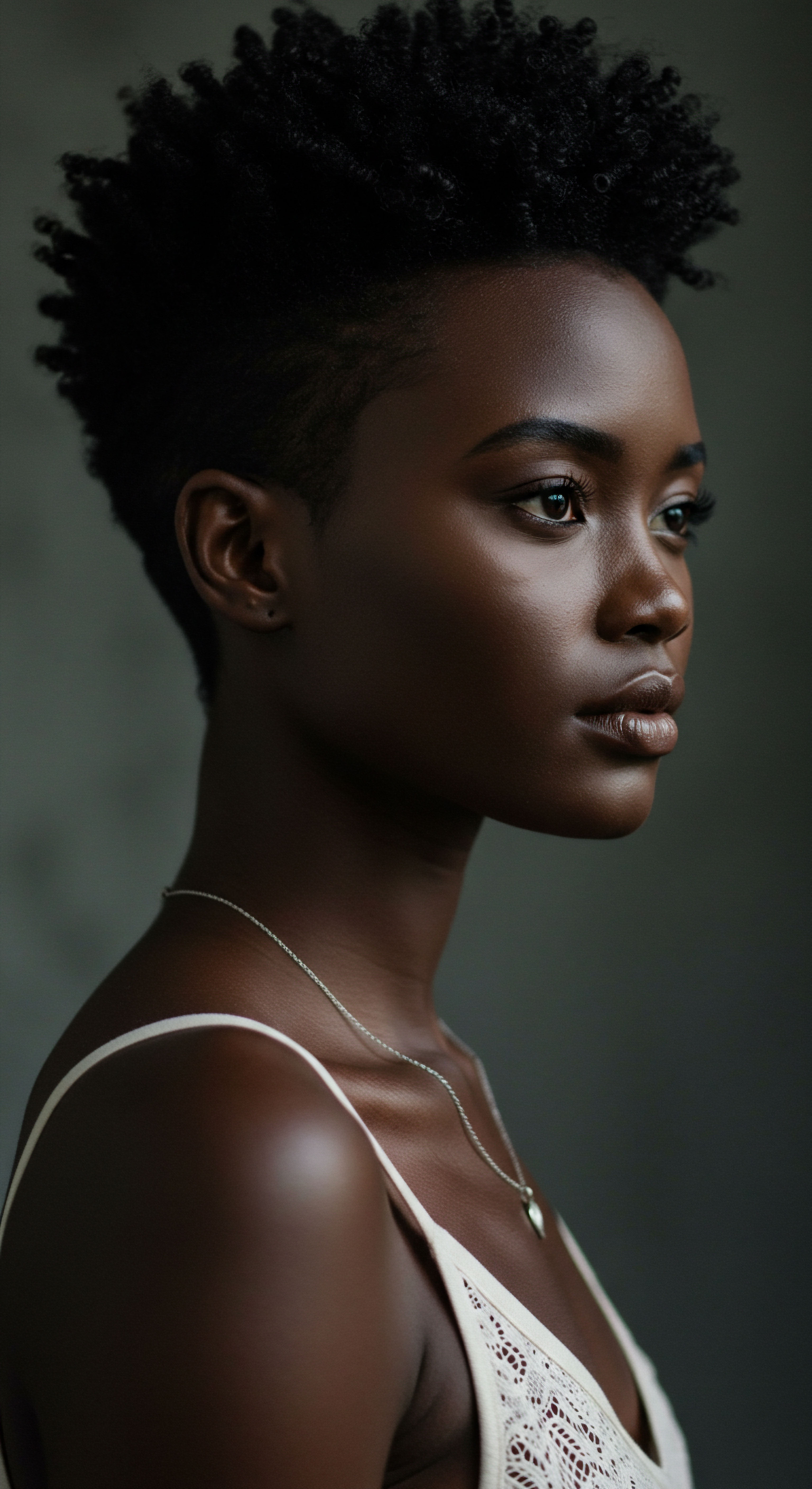
The Nighttime Sanctuary ❉ Essential Sleep Protection and Bonnet Wisdom
The hours of sleep, often perceived as a time of rest, can paradoxically be a period of significant stress for textured hair. Friction against cotton pillowcases can lead to dryness, tangles, and breakage. This vulnerability led generations to devise ingenious solutions, which remain remarkably relevant today.
The practice of protecting hair at night, often with bonnets or scarves, is a simple yet profound act of care. These accessories, traditionally made from silk or satin, create a smooth surface that reduces friction, helping to:
- Preserve Moisture ❉ Unlike cotton, silk and satin do not absorb moisture from hair, keeping strands hydrated.
- Minimize Friction ❉ The smooth surface prevents hair cuticles from roughing up, reducing frizz and breakage.
- Maintain Style ❉ Helps extend the life of a hairstyle, reducing the need for daily manipulation.
This wisdom, passed down through families, highlights an understanding of hair’s delicate nature long before scientific laboratories could confirm the mechanisms of friction and moisture loss.
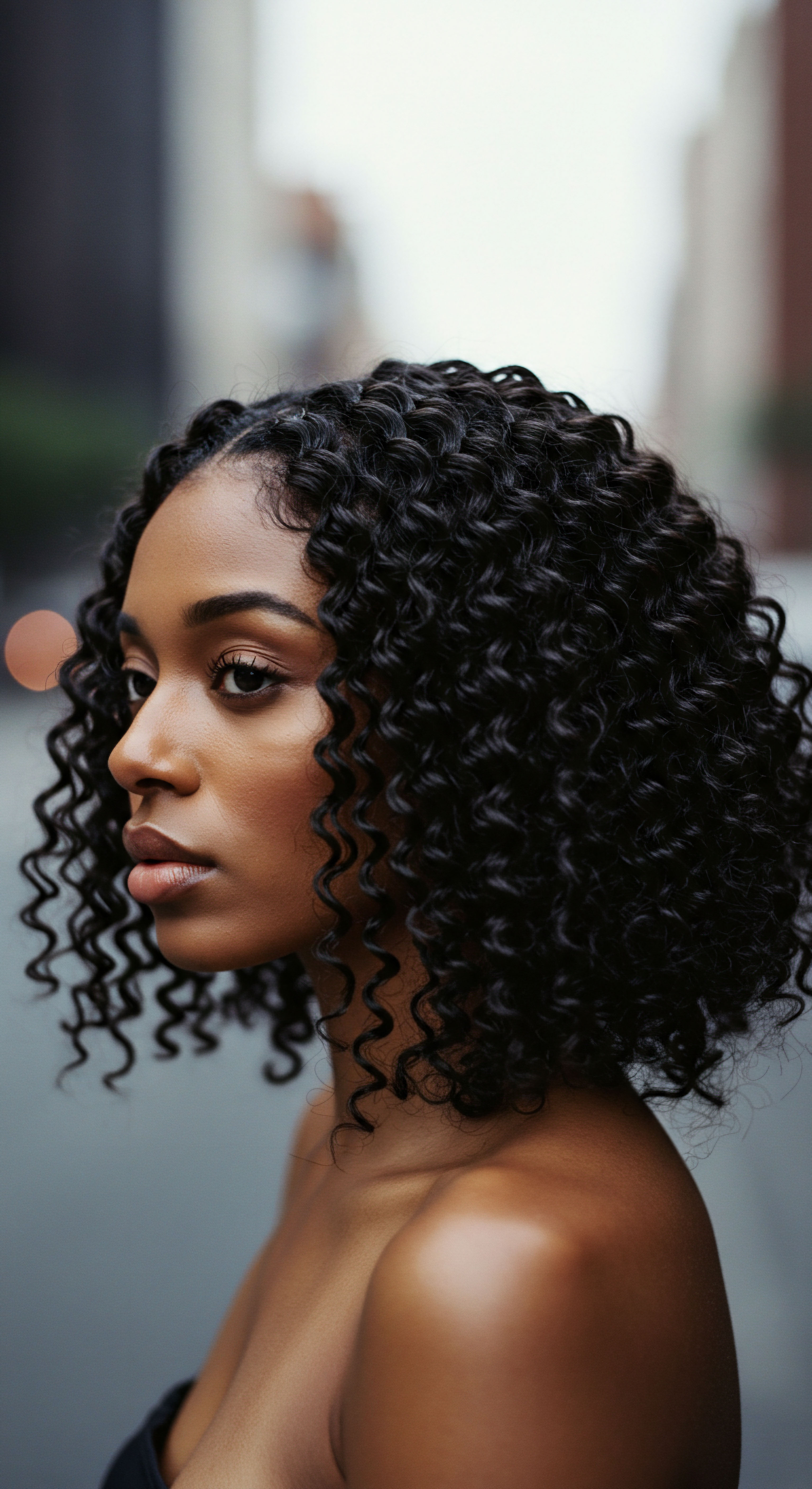
Ingredient Deep Dives for Textured Hair Needs
The ingredients we choose for our hair products hold significant sway over its health. A careful look at formulations, informed by both scientific understanding and traditional knowledge, helps us make discerning choices.
Certain ingredients prove particularly beneficial for textured hair:
- Humectants ❉ Glycerin and hyaluronic acid attract moisture from the air, drawing it into the hair shaft.
- Emollients ❉ Shea butter, coconut oil, and jojoba oil soften and smooth the hair, providing a protective coating.
- Proteins ❉ Keratin and hydrolyzed wheat protein can help strengthen hair strands, particularly those prone to breakage.
Conversely, some ingredients, such as heavy silicones or certain alcohols, may lead to build-up or dryness for some hair types. A conscious selection of ingredients, mirroring an ancestral reverence for natural plant extracts and oils, aligns modern care with timeless principles.

Textured Hair Problem Solving Compendium
Addressing common hair concerns requires a systematic approach, often drawing upon a combination of scientific understanding and inherited wisdom. Problems like dryness, breakage, and scalp irritation are universal, yet their manifestation in textured hair often requires specific solutions.
Consider dryness, a frequent concern for textured hair due to its structure. Solutions might include increasing water intake, using heavier butters and oils, or incorporating steaming treatments to help products penetrate. For breakage, a critical look at styling habits, tool choices, and protein-moisture balance becomes necessary. Scalp health, the foundation of healthy hair, often benefits from gentle cleansing and targeted treatments for conditions like dandruff or itchiness.
This iterative process of identifying an issue, researching solutions, and observing results mirrors the adaptive nature of historical hair practices, where communities shared remedies and refined techniques over time.

Holistic Influences on Hair Health
Hair health is not an isolated phenomenon; it is a reflection of overall well-being, deeply intertwined with diet, hydration, stress levels, and even emotional states. This holistic perspective, a cornerstone of many cultural traditions, underscores the idea that external care alone is insufficient without internal balance.
A diet rich in vitamins (A, C, D, E), minerals (iron, zinc), and proteins provides the building blocks for strong hair. Adequate hydration ensures cells function optimally. Stress management techniques, such as mindfulness or regular physical activity, can reduce hair shedding linked to elevated cortisol levels. Even sleep quality plays a role, as the body uses rest periods for cellular repair and regeneration.
This integrated view, where the self is seen as a complete system, echoes ancestral understandings that connected physical appearance to spiritual and communal harmony. It prompts us to care for our bodies with the same attentiveness we apply to our hair.
Modern hair care gains depth when connected to ancestral practices, creating a continuous flow of knowledge for well-being.

How does Cultural Understanding Shape Contemporary Hair Science?
Understanding the cultural context of hair provides crucial data points for modern scientific inquiry and product development. For centuries, diverse communities developed hair care practices based on local flora and inherited wisdom, often without formal scientific study. Today, researchers are increasingly turning to these historical practices to uncover effective natural ingredients and sustainable methods.
For example, the widespread historical use of shea butter across West Africa for skin and hair care, a practice deeply embedded in local cultures, has been scientifically validated for its moisturizing and anti-inflammatory properties. Similarly, the traditional use of various plant extracts for cleansing or conditioning in different indigenous communities around the world provides a rich source of potential new ingredients for cosmetic chemists.
Moreover, cultural understanding highlights the psychological and social dimensions of hair, which modern care strategies must also address. Hair discrimination, rooted in historical biases against certain hair textures, continues to impact individuals globally. A 2023 research study revealed that Black women’s hair is 2.5 times more likely to be perceived as “unprofessional” in the workplace, and approximately two-thirds (66%) of Black women alter their hair for job interviews. This societal pressure influences product choices, styling habits, and even the emotional relationship individuals have with their hair.
Modern care strategies, therefore, must not only address biological needs but also provide solutions that affirm identity and counter systemic biases. This cultural lens helps science develop solutions that are not just effective but also culturally sensitive and empowering.

Can Traditional Methods Offer Solutions for Current Hair Concerns?
Traditional hair care methods, often passed down through generations, hold a wealth of practical solutions for contemporary hair concerns, particularly for textured hair. These methods frequently relied on locally available natural resources and deep observational knowledge of hair’s response to different treatments.
For instance, the practice of oiling the scalp and hair, common in many African and South Asian cultures, directly addresses the need for moisture retention in hair types prone to dryness. While modern science can now explain the occlusive and emollient properties of oils like coconut or argan, the practical application was perfected through centuries of communal practice. Similarly, techniques like protective styling, which minimize manipulation and environmental exposure, have been employed for generations to preserve hair length and health.
Traditional practices also offer perspectives on sustainable and minimalistic care. Many historical methods prioritized simple, multi-purpose ingredients derived directly from plants, reducing reliance on complex chemical formulations. This can inspire modern consumers seeking cleaner beauty options. While scientific validation remains important, the efficacy of many traditional methods, proven by lived experience over time, certainly offers valuable insights for current hair care.
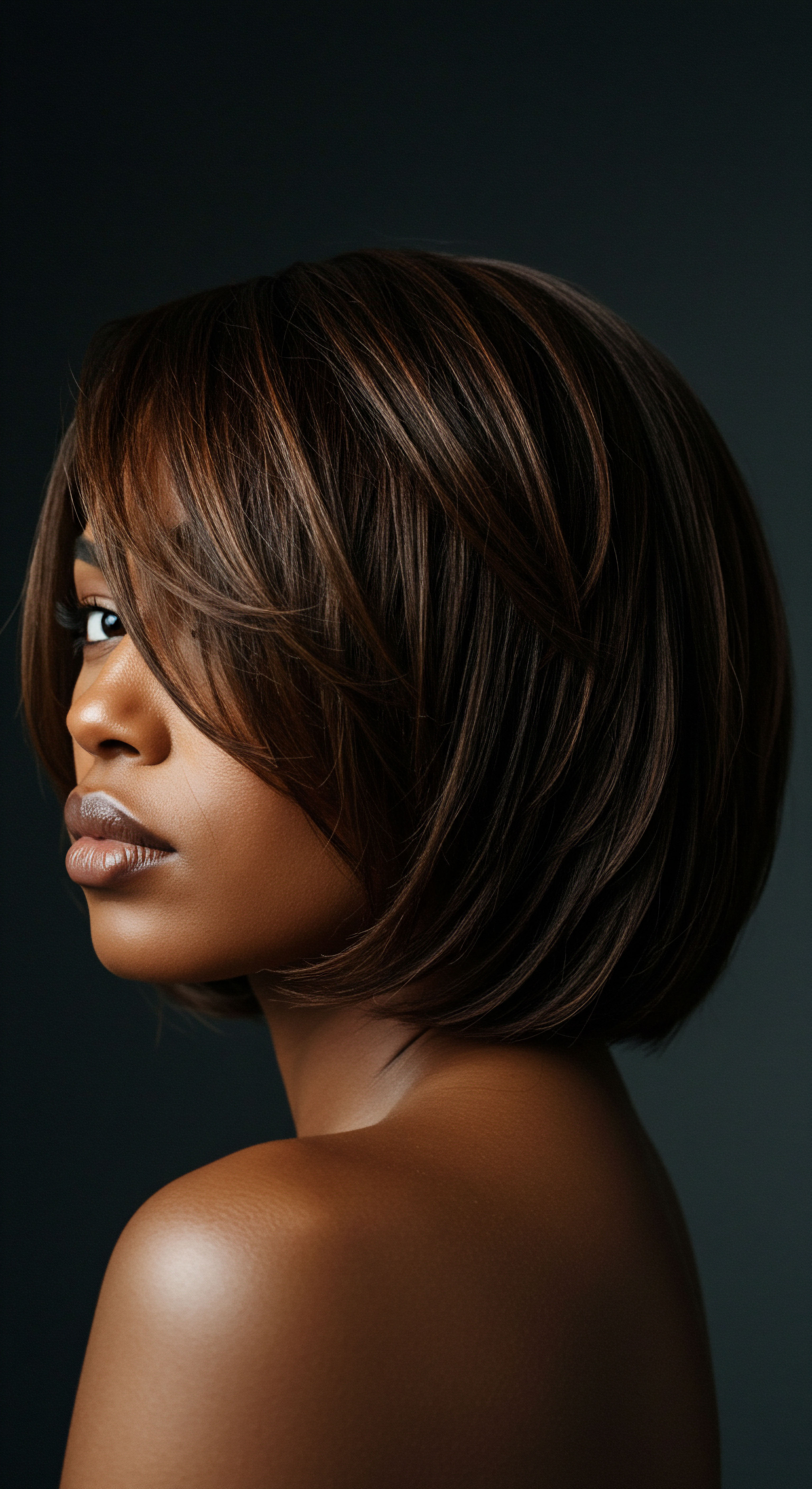
Reflection
As we draw our thoughts to a close, a quiet sense of calm settles. The journey through hair’s deep past and its present challenges reveals a profound truth ❉ caring for our strands is never a superficial act. It is a dialogue with history, a celebration of identity, and a commitment to personal well-being. When we look at a curl, a coil, a wave, we see not just a fiber, but a living connection to stories untold, to resilience, and to a wisdom that stretches across time.
Our hands, as they tend to each strand, become instruments of continuity, honoring what was and cultivating what will be. The gentle care we offer today becomes a quiet legacy for tomorrow, a beautiful continuation of an ancient practice, made new with every conscious touch.

References
- Byrd, Ayana D. and Lori L. Tharps. Hair Story ❉ Untangling the Roots of Black Hair in America. St. Martin’s Press, 2001.
- Ellington, Tameka N. Black Hair in a White World. The Kent State University Press, 2020.
- Corson, Richard. Fashions in Hair ❉ The First Five Thousand Years. Peter Owen, 1965.
- Johnson, Chelsea Mary Elise. Natural ❉ Black Beauty and the Politics of Hair. University of California Press, 2024.
- Dabiri, Emma. Twisted ❉ The Tangled History of Black Hair Culture. HarperCollins, 2020.
- Ayanlowo, O. O. and Otrofanowei, A. A. “A Community-Based Study of Hair Care Practices, Scalp Disorders and Psychological Effects on Women in a Suburban Town in Southwest Nigeria.” International Journal of Trichology, vol. 15, no. 1, 2023, pp. 27-33.
- Kameswar Rao, A. A. et al. “Effect of Cultural Factors on Hair Fall.” International Journal of Community Medicine and Public Health, vol. 2, no. 4, 2015, pp. 647-650.
- Maharaj, Claudette. “Beyond the roots ❉ exploring the link between black hair and mental health.” British Psychological Society, 2025.
- Taye, B. et al. “Bridging gaps and cultivating care ❉ a call for culturally competent dermatological education for ethnic hair.” Journal of the American Academy of Dermatology, 2025.
- Doss, Ashley. “African American Personal Presentation ❉ Psychology of Hair and Self-Perception.” ResearchGate, 2016.